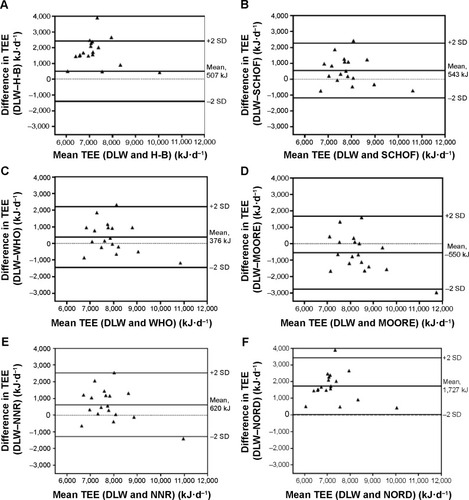Figures & data
Table 1 General characteristics of women with COPD
Table 2 Energy expenditure and physical activity level assessed by different methods in women with COPD (N=18)
Table 3 Energy expenditure and physical activity level estimates from the criterion and test methods using different statistical analysis in women with COPD (N=19)
Figure 1 Bland–Altman plots.
Abbreviations: DLW, doubly labeled water; H–B, Harris–Benedict; NNR, Nordic Nutrition Recommendations; NORD, Nordenson; PAL, physical activity level; RMR, resting metabolic rate; SCHOF, Schofield; SD, standard deviation; TEE, total daily energy expenditure; WHO, World Health Organization.

